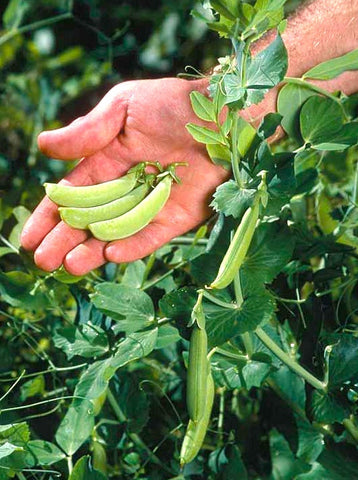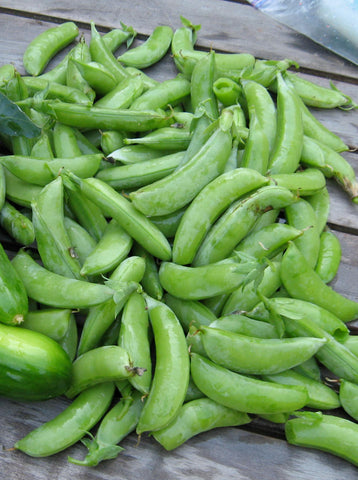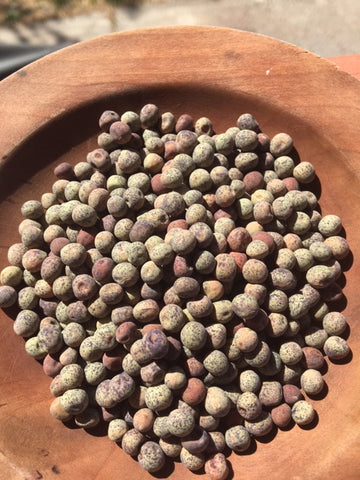SEED CALCULATOR ❌
Number of Plants 0
Weight 0 oz
at 0 seeds per foot

Peas
Pisum sativumCertification
Type
Color
Heritage
Season
Originated in eastern Mediterranean and were grown mostly for their dry seeds. Carbonized seeds have been found in Switzerland dating back to 7000 BC. In the first century AD Columella mentions them in De re rustica, and Roman legionaries still gathered wild pisi from the sandy soils of Numidia and Palestine, to supplement their rations. In the Middle Ages, field peas are constantly mentioned, as they were the staple that kept famine at bay, as Charles the Good, count of Flanders noted explicitly in 1124.
Green "garden" peas, eaten immature and fresh, were an innovative luxury of Early Modern Europe. In England, the distinction between "field peas" and "garden peas" dates from the early 17th century. Sugar peas, which the French soon called mange-tout, for they were consumed pods and all, were introduced to France from the market gardens of Holland in the time of Henri IV, through the French ambassador. Modern split peas, with their indigestible skins rubbed off, are a development of the later 19th century. Delicious snow pea recipes.
Companions: carrots, turnips, radishes, cucumbers, corn, beans, potatoes
Inhibitors: onions, garlic, gladiolus

-
Price List
Originated in eastern Mediterranean and were grown mostly for their dry seeds. Carbonized seeds have been found in Switzerland dating back to 7000 BC. In the first century AD Columella mentions them in De re rustica, and Roman legionaries still gathered wild pisi from the sandy soils of Numidia and Palestine, to supplement their rations. In the Middle Ages, field peas are constantly mentioned, as they were the staple that kept famine at bay, as Charles the Good, count of Flanders noted explicitly in 1124.
Green "garden" peas, eaten immature and fresh, were an innovative luxury of Early Modern Europe. In England, the distinction between "field peas" and "garden peas" dates from the early 17th century. Sugar peas, which the French soon called mange-tout, for they were consumed pods and all, were introduced to France from the market gardens of Holland in the time of Henri IV, through the French ambassador. Modern split peas, with their indigestible skins rubbed off, are a development of the later 19th century. Delicious snow pea recipes.
Companions: carrots, turnips, radishes, cucumbers, corn, beans, potatoes
Inhibitors: onions, garlic, gladiolus









